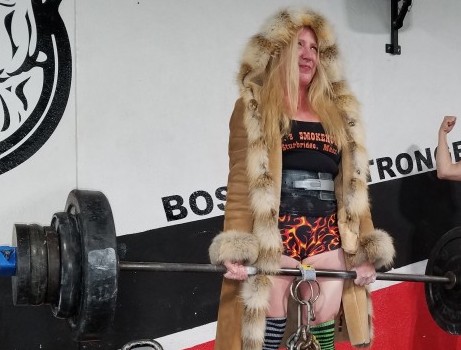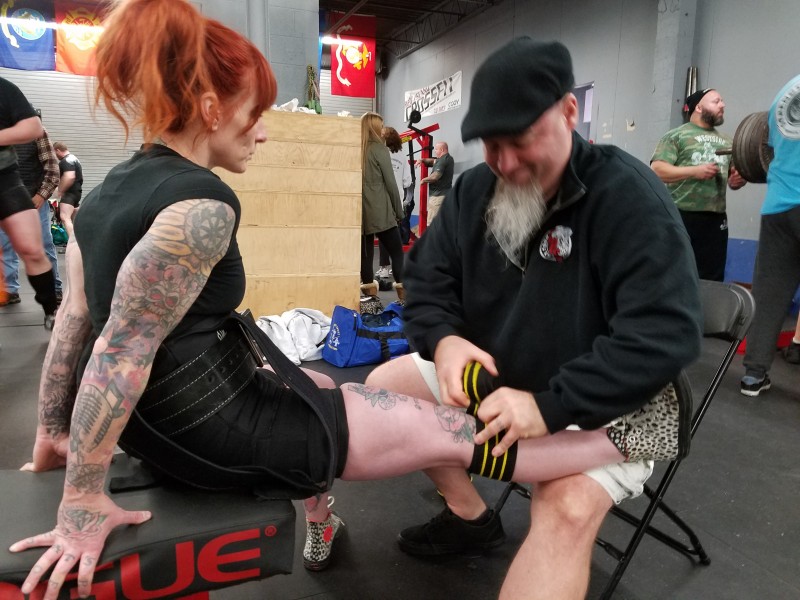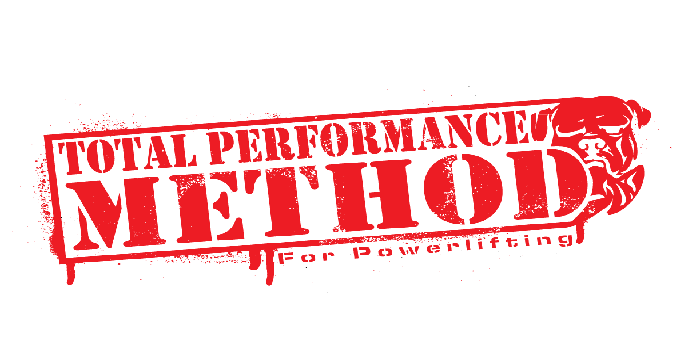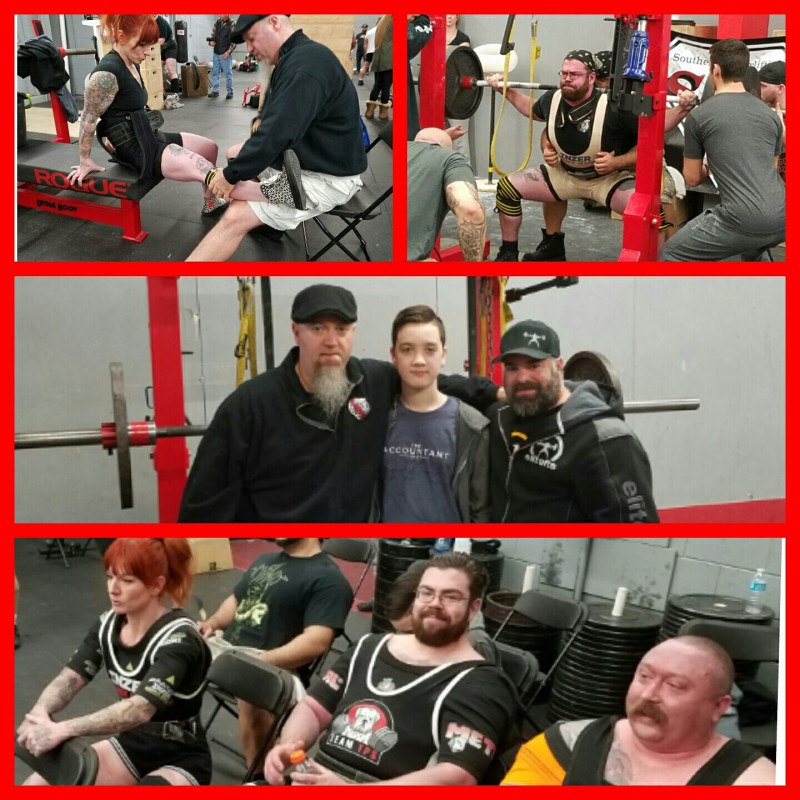
In my last log I covered what the lifter should do before and at the meet.
Today, I’ll cover what the handler should do.
Over the past few years we have seen (at least around New England), Powerlifting explode in popularity.
Almost 100% of it is RAW too.
With the influx of new lifters I have seen a lot of areas where the lifter could have done much better had they only had a good coach/handler to help them.
In Powerlifting, there is no requirement that you lift a certain amount of weight (unless it is at a meet that had qualifying totals). All that is required is that you get on the platform and do your best.
Some will hand-wring over the fact that it is not a hardcore/fringe sport anymore.
Some will welcome the new lifters, as without them the sport will die.
It doesn’t matter where you stand on that curve. New lifters will always be a part of the sport, and shouldn’t we, as veterans’ help guide them and Live, Learn and Pass On?
If we do this, the sport will grow and improve, right?
So……..
I’ve seen some things over the past few years at meets that make me shake my head and walk away.
No, I don’t offer any tips or advice at the meet. That’s not my place. I am there to take care of MY lifters.
Here’s a few:
- The Coach/handler who is fooling around and holding court while his lifters are getting called to the score table for their next attempts. They of course had to go and find the “coach” as they had no idea what to put in.
- The lifter who bombs because they opened too heavy.
- The coach/handler who tries to offer tips, or make changes to someone else’s lifter. (Really?)
- The coach/handler who shows up just as the first attempt is starting.
- The coach/handler who is asking the lifter what they should take for their next attempt.
- The coach/handler who is yelling and screaming at their lifter.
I’ve seen more, but I think you get it.
Or not.
Let’s go over what the handler does for the lifter before and at the meet in our Guide to Handling Lifters at the Meet
Most of this will be for NEW people, but the old timers may like to read it too.
I love comments, so if you are a veteran and have a good tip, add it below.
A few months before the meet:
-Pick the meet with your lifters
-Go over the rules/commands of the federation they will be lifting in
-Advise them if they need a membership card
-I used to tell people to make sure they register, but I am getting away from that. If they don’t register, they were not dedicated and I don’t want to handle them anyway. So there.
-Let them know what type of gear they need and where to get it. Here, at elitefts.com of course.
-If you are the coach, get the program written and implement it.
-Book your hotel, flights, etc. NOW. If the meet is more than an hour away, I highly suggest getting a hotel.
You may laugh at me here, but shit happens.
You could get a flat tire on the way, there could be a huge accident snarling traffic, there could be swarms of locusts, or worse, protestors blocking the highway. The point is, your lifter will be depending on you, it’s a lot easier to be right there a few blocks away.
Shit happens.
Oh, and as I said, the lifters should pay for this. You are taking a day or more out of your life to help someone. This is time away from your family too.
You shouldn’t incur an expense here.
The Week Before the Meet
-Confirm hotel and travel
-Confirm they are on the roster for the meet
-Review the training cycle and establish openers and warmups for each lift
Here is where we see a lot of issues.
New and veteran lifters listen up:
NO ONE CARES WHAT YOU OPEN AT.
Opening too heavy is one of the biggest mistakes I see. If you open too heavy chances are you’ll miss and bomb.
All that training was now for nothing.
Your opener should be something that you can SMASH for at least a double with 100-degree fever, a hangover and a broken ankle.
NO ONE CARES WHAT YOU OPEN AT!
The opener gets you in the meet.
Miss it and you’re out.
Your handler should choose this based off actual lifts in the gym during this prep cycle.
It is not ego based.
A good handler will change openers if the lifter submitted them and they are too heavy.
I’d rather have the lifter go 9 for 9 and have a great meet hitting PR’S, but be mad at me than have them bomb because I didn’t have the balls to tell them they were idiots for opening at 99.5% of a questionable gym lift.
Wow, that’s a run-on sentence.
OK, we have that covered.
-Confirm meet location and time
-Coordinate where and what time you’ll be meeting your lifter/s
-Prepare a “Meet Sheet”
I do this for one or multiple lifters.
I set up a cheat sheet to bring with me that has:
Lifers name
Rack height
Warmups for each lift: If your federation is in Kilos, write your warmups in pounds and kilos. A lot of times there aren’t any Kilo plates in the warm up room and you are now forced to do math.
Opener
Subtotal box (After bench)
Subtotal box (after each deadlift)
Prior PR’s for each lift and total
Qualifying total needed if applicable
Notation of a record attempt
Kilo-Pounds conversion sheet on the back.
Why do I do it like this?
Well, I usually handle multiple lifters and the name is key. Self-explanatory.
Rack height: as a handler you need to submit this, and check it before each attempt. If you’ve been hit in the head as many times as I have, there about a 0% chance you’ll remember it. Write it down.
Warmups: do I need to explain this?
Why only the opener recorded?
I never write down 2nd and 3rd attempts unless it is a first meet for someone.
At a first meet, we NEED them to go 9 for 9 and get a total and an AWESOME experience.
For first timers, we choose all three attempts in advance because until you’ve done your first meet, you are a NITWOT.
(Nitwit without a total)
Don’t bomb and continue to be a NITWOT.
We choose 3 attempts that we are very confident they will get.
However, if you have a few meets under your belt, are in a hot weight class, or need a top 3 placing (or a hundred other scenarios), we don’t set your 2nd and 3rd attempts beforehand.
I use a formula. I’ll go overt that in a bit.
-Notify promoter if any lifters will be setting World Records.
Most local meets will need to make sure a qualified judge is there. Bigger meets should have judges there capable of this.
-Submit openers
-Know your lifter: If you are the coach you "know" should each lifter and their preferences.
Some like to be yelled at before a big lift (not degrading-you know, pumped up)
Some like you to shut up and leave them alone
Some like certain cues
If you are not the coach BUT are handling someone, ask them how they like things.
The last thing you want to do it affect someone’s performance because you wouldn’t shut up and get out of their face.
-Review Commands
-Review cues you will give.
I love the “WAIT” command for new lifters.
After each attempt tell them to wait. This means don’t rack or lower until the judge says to.
New lifters frequently get reds due to missing commands.
-Review stuff to bring to the meet. This is covered in my last post.
The Day Before the Meet:
-Confirm arrangement with your lifters. Let them know when to be there, and what time you’ll be there.
Pro Tip-get there before them. They won’t know how to set up “Camp”
-Remind them about equipment to bring, food and membership card
-Remind your lifter to weigh in early if they can
-Gather up your meet sheets and upload them to Google Docs in case you lose them or spill coffee or dip spit on them.
We usually bring a few coaches to meets if we have multiple lifters. Each coach gets a sheet.
If you are going to do this, establish which coach does what at the meet beforehand.
One for front of the house, one for back of house.
-Pack and get a good nights sleep.
If you are staying at a hotel, drive to the meet site as soon as you get settled. Never trust the GPS first thing in the morning.
This can save you from a disaster.
Trust me.
Been there.
Day of the Meet:

-Arrive at the meet before your lifters and verify openers
-Assign handling duties to your other handlers if you have more than one.
As I said earlier, we usually have multiple lifters and having a plan is better than looking like a bunch of monkeys humping footballs.
I usually handle front of the house.
I go to the platform with the lifters, check rack heights, give cues, let’s them know where they are (on deck, in the hole) submit attempts and set up gear.
Russ is the one who has been with me the most and he does back of house. He runs the warmup room and keeps them organized. You won’t believe how many times new lifters decide to go for a walk or talk to a friend in the audience and come close to missing their attempt.
Keep them focused.
-Meet and greet your lifters as they arrive and show them where you set up camp.
-Show them the warm up room and the walk to the platform
-Check them in and get them weighed
-Set rack heights/submit them
-Attend rules meeting
-Check flights
-Determine when to warm up:
This is an art. You don’t want to have your lifter warmed up too soon. If flights were emailed to the lifters, don’t trust them.
Things change.
Shit happens.
Are they AM or PM session?
Did they make weight?
If your lifter is in the first flight you want to get them warmed up as soon as rules are over.
If they are in the second flight, you can wait a little while.
Same goes for third flight.
You should know how long they need to warm up based off how many warm ups they are doing.
-Keep an eye on the board: know when your lifters are up, let them know when they are in the hole or on deck.
I like to tell them when they are four out.
-GEAR: if you are handling lifters in gear this is a whole ‘nuther thing.
Bench shirts needs to be jacked, straps have to be set, knees have to be wrapped.
I suggest starting the gear set up when they are four out.
This gives you plenty of time to make it prefect.
When wrapping knees, you need to know how long it takes.
For me, I start when they are in the hole (2 out).
That gives me at least 90 seconds to get it done.
You do not want to start this too soon. Get a feel for the flow of the meet, and if the lifter before them is Raw or geared. A Raw lifter moves faster than a geared lifter.
If your lifter is in gear and the two before are in gear, maybe wait to wrap until they are on deck (1 out).
If they are in gear and the two before them are Raw, you have less time.
-Once it’s time for lifting to start, treat your lifter like a baby. Do everything for them, unless they specifically ask you not too.
Get them drinks, make sure you have ammonia so they can huff, have their wraps, help them on with the belt, cue them through the lift, everything.
-Once they are called, check the weight. Make sure it is loaded properly. Check the rack height too.
If there is a misload or a wrong rack height/bench height, politely ask the judge to have it corrected.
Mistakes happen, they’ll fix it.
-Have them hit the ammonia
-Watch the lift closely to determine the next attempt.
-Tell them to WAIT (see above) until the rack or down command is given.
-Get them off the platform and remove wraps if needed
-Ask them how it felt. If they say EASY and it looked that way, put in your planned next jump according to your formula.
If they say it was hard, be conservative. If they say it was easy and it looked like it was a grinder, be conservative.
Or pass.
Passing on a next attempt is only for experienced handlers and lifters where a placing or a title is at stake.
This is strategy
-Watch the competition too.
See where those in the lifters class are and what they are doing in case you need to make adjustments.
-Put in the next attempt. You only have 60 seconds at most meets to do this. Believe it or not, you can get all of the things listed above done in 60 seconds. You just have to be prepared.
-Sit them down and have them relax as much as possible
-I avoid saying too much once the meet begins unless it 100% necessary.
Let them lift.
Let them enjoy this. Save the comments for the gym.
-Once all of your lifters are done with the first lift, let them rest but not too long. Depending on how many flights there are, they may need to start warming up the next lift soon.
-Have them eat something between lifts too
-On to the bench. All of the above apply.
-Add up their subtotal after the bench in case you have to adjust the deadlift opener for some reason and to see where you stand for a qualifying total or the win.
EG: They need a 1200 pound total to qualify and made all three attempts and only need to make the first deadlift to qualify, you don’t need to stress or stress them. Decide after they hit the total they need if you are going to go for a PR or just the total you need.
This can apply I many different situations.
READ MY POST HERE ON THINKING TACTICAL
Once the deadlifts are over, there isn’t much to do.
Thank the judges, crew and promoter and wait for the trophy presentation.
Grab a group photo or two.
It’s a good idea to help them get all of their gear together and make sure they don’t leave anything.
Remember, your job as a handler is to HANDLE them.
All they should need to do is lift!
Do everything for them and let them lift.

Now, the formula.
I don’t like to give out too much strategy, but choosing attempts is an art and a science.
We do ours here at TPS a little different than a lot of places.
We have them set the opener in training.
Yup.
We base openers off a lift that is somewhat close to the meet that is done as a part of the training cycle on schedule. It’s usually a few weeks out for a double.
With new lifters we use a triple.
Most of the programming is RPE based, not percentage based.
If they can do, say 455 for a double at an RPE 8 a few weeks out, we will base the opener off that.
It may be 455, it may be lighter depending on the lift.
If it is a lift they struggle with, it is lighter.
It can also be lighter on the deadlift as people get tired.
We also know what their PR’s are ahead of time and if the training cycle worked, we should see PR’s at the meet right?
I use a 5-7% jump for attempts.
A lot of people use 10% and I used to a long time ago. I’ve found that smaller jumps work better.
If they SMOKED the first attempt, go 7%. If it was a grinder, go 5%.
Same goes for third.
Unless.
You need a total or a win.
I’ve been in this situation before and had to do something I would not normally consider.
My lifter needed a qualifying total for the Arnold/XPC and had a bad day on the squat and the bench.
The only way to get it was a 10% jump on the third deadlift.
She did it.
That’s a whole ‘nuther story.
There you have it.
I hope this post helps you and your lifters and prevents you from being the handler who is holding court while their lifter is waiting for them and getting nervous.
Ask me a question-Be sure and Type to Murph in the header
Find me on Google-search for Total Performance Sports Malden, Mass. The Best Gym in Boston, Facebook too.
Oh, yeah, follow us on Instagram too. TPSMalden
SHARE THIS!
#bostonsstrongest
Vincere vel mori











Appreciate it.
Vince vel Mori